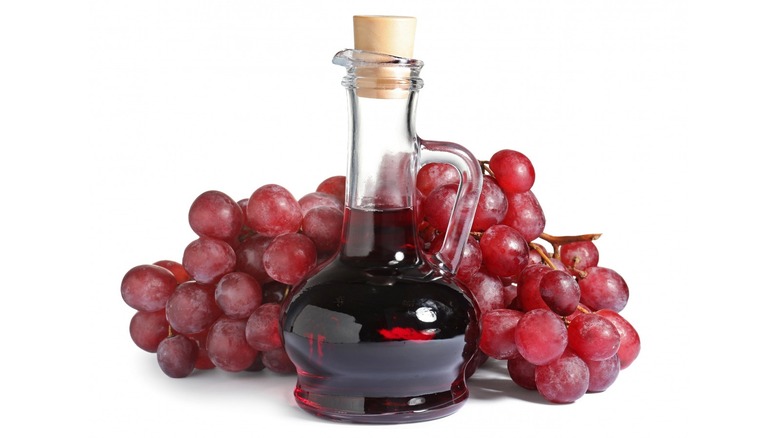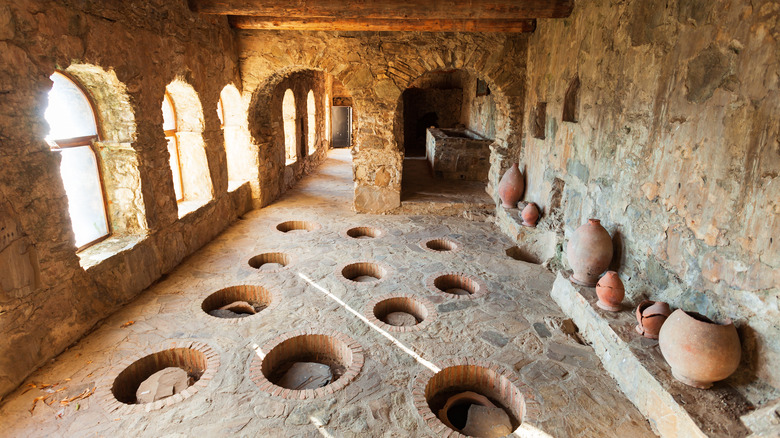Where Wine Was Really Invented
If you plan to celebrate National Wine Day on May 25, perhaps you'll swirl around a glass of Cabernet or Merlot and ponder where the world's first wines were created. There are several countries that have a long history of domesticating grapes to make the millennia-old beverage, such as Armenia, Iran, and Turkey. However, in 2015, archeologists unearthed 8,000-year-old clay winemaking vessels with grape residue dating back to 6,000 B.C. This suggests the European country of Georgia has the oldest known evidence of wine in existence – it's even older than writing.
Dubbed the "cradle of wine," Georgia prides itself on its rich history and traditional techniques that are still used today. Even the capital city's iconic 65-foot statue, known as the Mother of Georgia, holds a bowl of wine in one hand as a symbol of hospitality. One of the main areas for wine growing is found in the eastern region of Kakheti. Here, factors like elevation, humid coastal breezes from the west, and mild winters all contribute to the area's perfectly fertile soil quality. These nearly tropical conditions have created a whopping 500 kinds of grapes over several generations. When you explore the origins of this age-old libation, you learn that the ancestors of modern Georgians made wine by burying grape juice.
Georgians still use the ancient qvevri winemaking method
It's pretty amazing that in Georgia, you can sample wine cultivated and produced through the very same traditional processes as it was thousands of years ago. The jars discovered at the dig site of Southern Caucasus, called qvevris, are used in a technique that has been shared among families, village communities, and farmers since it was first practiced by Georgians in the Neolithic Age. Once the grapes were pressed, it was poured into qvevris to ferment and stored in underground pits throughout the winter, sometimes for as long as 50 years.
These days, qvevri wine only needs to stay buried in its hidey hole within the wine cellar, known as marani, for around six months to produce delicious results. The egg-shaped pots are able to contain anywhere from about 26 gallons to over 900 gallons of wine, big enough that you'd need to clamber down into the thing to clean it. Such masters of wine don't even need to worry about temperature regulation, as the pots are sealed up tight with clay before burial. Hailing from four generations of qvevri winemakers, Zaza Kbilashvili claimed that "even modern filters can't filter the wine as well as a qvevri" (via Wine Enthusiast).
Several Georgian wineries and vineyards have tours that teach visitors about the endurance and longevity of their nation's most cherished cultural traditions surrounding the humble grape. The qvevri practice is so important to Georgian history that it is now protected by UNESCO.

